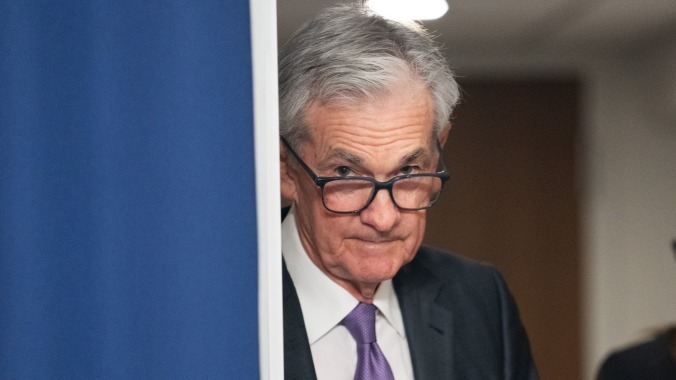Inflation Is Not Going Away
Photo by Xinhua/Shutterstock
The economy received surprise inflation data this morning, as the Consumer Price Index rose to 3.5%, up 0.3% from the last reading in February. Core inflation, a measure the Federal Reserve prefers over the CPI, rose to 3.8%. This was a 0.4% increase, which was higher than economists’ expected 0.3% raise. These figures may seem small, but their reverberations across the economy are quite large, and the fundamental dynamic here of sticky inflation is the headline.
The Federal Reserve’s target for inflation is 2%. They raised the Fed Funds Rate to just over 5% in their attempt to tame inflation, and this has the effect of raising interest rates for an array of things like car loans, mortgages, and credit cards. If inflation remains high, then the Fed will keep interest rates high. The market was expecting the Fed to cut rates in their June FOMC meeting, and Fed Chair Jerome Powell said he plans on cutting rates multiple times this year, but this new data potentially throws a wrench into their plans.
The two-year Treasury Note this morning is flying, up nearly 4% today as of this writing. This Note is a helpful indicator of the market’s expectations for what interest rates will look like over the next two years, and at 4.93%, it is throwing into question whether the Fed really can cut rates right now from the current level around 5%.
“Higher for longer” has been the Fed’s promise to the market since this rate hike regime began in March 2022, and the recent A.I.-driven stock market bubble demonstrated how little the market took that seriously, which has potentially hurt the Fed in its fight to tamp down on inflation.
Perhaps this is what Powell meant in promising higher rates for longer. This data was a surprise to the broader market, but the Fed has a litany of tools at its disposal that we do not, and it’s possible that this upside surprise in inflation was already priced into their models. Just because the market was caught offsides this morning does not mean that we are deviating from the plan Jerome Powell laid out at the beginning of the year.
The recent A.I.-driven bubble in equities has largely been impervious to inflationary reason en route to making the A.I. chip-maker Nvidia into the third-most valuable company in the world. This hot inflation print is a reality check for the hopium dealers on Wall Street, as it is proof that we are not out of the woods at all.
The fear that Jerome Powell and other Fed policymakers have communicated from the beginning of this pivot is they do not want to repeat the mistakes of the 1970s. The Fed cut rates too soon during that inflationary crisis and made inflation much worse, and eventually Fed Chair Paul Volcker got extremely aggressive in raising rates as high as 20% in June 1981.
This so-called “Volcker shock” eventually brought inflation under control, and he is a legend in monetary policy circles because of how he ended that crisis. When older folks make fun of us younger folks for being aghast at an 8% mortgage rate, they’re referencing this era where the Fed did everything they could to smash demand down to a point where inflation would follow it.
So should you be worried about today’s inflation print? If you’re in the stock market, most likely. I have already detailed how the math at the base of capitalism proves that neoliberalism is a lie, and these “risk-free” rates like the two-year Treasury Note help determine stock prices. If that rate goes up, stock prices go down. It’s possible this could be the pinprick to burst this stock market bubble.
If you’re just a regular person more concerned about interest rates, you should still be worried, but less so than market participants who have created one of the most expensive stock markets in history. The February inflation print indicated that it would remain sticky, and so this month’s data is simply following that trend. This is not exactly cause for celebration, as we have more confirmation that the battle against inflation is far from over.
The initial shock that pushed inflation as high as 9.1% in June 2022 had a lot to do with COVID and the supply shocks it created, and it was never going to stay that high barring a serious policy error from the Fed. This was also why everyone doing victory laps on inflation coming down in 2023 was getting way out ahead of themselves. Of course the year-over-year data was going to regress from its immense 9.1% peak, but now we’re comparing this year to 2023, and the year-over-year inflationary data is much less rosy.
Whether inflation will come down to the Fed’s preferred 2% target is another issue entirely. There are many economists who believe that 3% is a more appropriate inflation target for the Fed, and the 2% standard is rooted in a world that COVID left behind.
This matters because whatever the Fed’s target is will have a direct effect on every interest rate in your life. Inflation is the great economic killer not only because it destroys value by making everything more expensive without a similar increase in quality, but it also dramatically raises borrowing costs, reverberating throughout the entire economy and hurting those who can afford it the least.